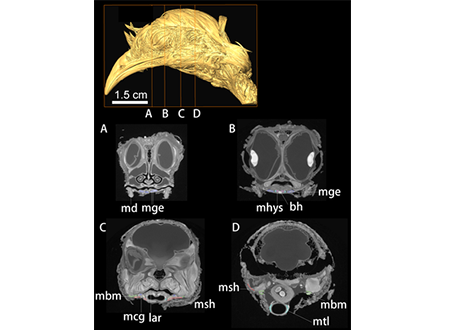Convergent evolution of a mobile bony tongue in flighted dinosaurs and pterosaurs

The tongue, with fleshy, muscular, and bony components, is an innovation of the earliest land-dwelling vertebrates with key functions in both feeding and respiration. Here, we bring together evidence from preserved hyoid elements from dinosaurs and outgroup archosaurs, including pterosaurs, with enhanced contrast x-ray computed tomography data from extant taxa. Midline ossification is a key component of the origin of an avian hyoid. The elaboration of the avian tongue includes the evolution of multiple novel midline hyoid bones and a larynx suspended caudal to these midline elements. While variable in dentition and skull shape, most bird-line archosaurs show a simple hyoid structure. Bony, or well-mineralized, hyoid structures in dinosaurs show limited modification in response to dietary shifts and across significant changes in body-size. In Dinosauria, at least one such narrow, midline element is variably mineralized in some basal paravian theropods. Only in derived ornithischians, pterosaurs and birds is further significant hyoid elaboration recorded. Furthermore, only in the latter two taxa does the bony tongue structure include elongation of paired hyobranchial elements that have been associated in functional studies with hyolingual mobility. Pterosaurs and enantiornithine birds achieve similar elongation and inferred mobility via elongation of ceratobranchial elements while within ornithurine birds, including living Aves, ossified and separate paired epibranchial elements (caudal to the ceratobranchials) confer an increase in hyobranchial length. The mobile tongues seen in living birds may be present in other flighted archosaurs showing a similar elongation. Shifts from hypercarnivory to more diverse feeding ecologies and diets, with the evolution of novel locomotor strategies like flight, may explain the evolution of more complex tongue function.